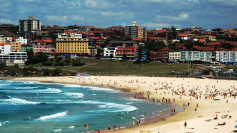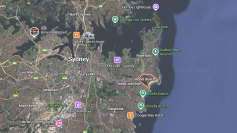At least 94 people have been confirmed dead following devastating mudslides and floods near Rio de Janeiro. As of Wednesday, rescue workers and residents are still frantically sifting through the debris to find survivors.
A month's worth of rain blanketed mountainous regions just north of the city, causing parts of large mountains to collapse down onto residential areas. Officials at the historic city of Petrópolis, just 70 miles from Rio de Janeiro, said they expect the death toll to rise as more bodies are recovered.
The last major landslide occurred in 2011, killing more than 900 people. The incident was considered to be the worst natural disaster ever to hit Brazil.
Heavy rainfall began on Tuesday, continuing throughout Wednesday. Dozens of homes and buildings were completely destroyed by landslides above Petrópolis, while waves of water submerged city streets. Video of rivers of mud rushing down the city was uploaded by residents online, showing how the waters dragged down trees, cars, and people.
Brazil's National Meteorological Institute said rainfall during the last few days was the worst ever recorded since 1952. Federal University of Juiz de Fora researcher, Cássia de Castro Martins Ferreira, described the weather over the past days as an "extreme event."
Petrópolis is a scenic region with a big national park and high, wooded mountains that have become a haven for tourists seeking relief from the coast's scorching heat. The Brazilian monarch Pedro II founded it in the mid-nineteenth century and held court there during the hot summer months.
Due to its location, the city has been subject to extreme rain and landslides. Weather experts explained that the city is located in a region where hot-air weather systems coalesce from the coast before clashing with colder air due to the high altitudes, resulting in huge storm formations.
Residents have gradually built communities into the hills as Petrópolis has grown over the years. Continued development has destroyed forested areas that formerly served as mudslide buffers. Some residents have also built homes on terrain that is sometimes too steep and unsuited for development.
Officials had devised preparations to prevent a repeat of the 2011 mudslides in the region. However, due to a lack of money and political power swings over the years, these plans have hardly progressed.
Residents have long called on the government to build more effective mechanisms to inform communities ahead of major weather occurrences. Only a few neighborhoods in Petrópolis are equipped with weather-warning sirens, and state and municipal administrations have yet to build similar systems in other susceptible areas.






